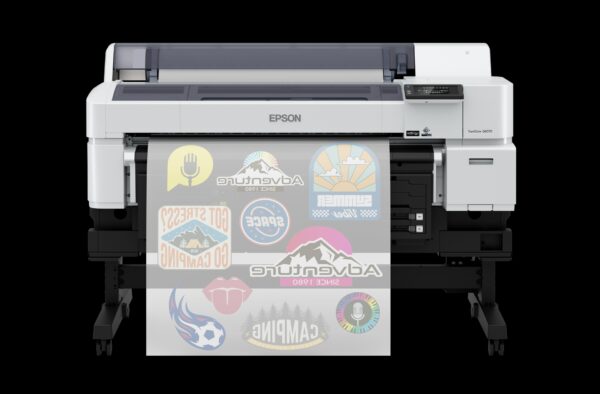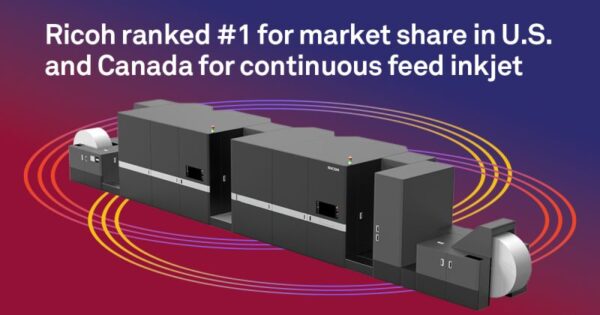Inspired by the Paris Agreement, both companies are on track to transition to 100% renewable energy within the next two years.
Pictured above: Epson’s production facility in Thailand.
The SDGs (Sustainable Development Goals), unanimously adopted by the member states at the United Nations Sustainable Development Summit in September 2015, are international goals for a sustainable and better world by 2030. There are 17 goals subdivided into 169 targets, but Japanese companies, especially imaging industry OEMs, are focusing particularly on the initiative to prevent global warming with the 13th SDG of “Specific Measures for Climate Change.” In this initiative, CO2 reduction has become a major theme. This encompasses various approaches such as planting trees and meeting the standards of the Energy Star Program for MFPs. Recently, Ricoh and Seiko Epson announced the advancement of their plans to adopt renewable energy.
Renewable energy is clean energy that does not emit greenhouse gases, such as solar power, wind power, geothermal power, small and medium-sized hydropower, and biomass, required to generate electricity as outlined in the 2016 Paris Agreement.
Unfortunately, thermal power generation from natural gas and coal is still predominant in Japan. The ratio of renewable energy to the amount of electricity generated is only 16.1% (FY2017). Comparing it in the same year, the United States is almost the same at 17.0%, Canada is by far the largest at 65.7%, and European countries such as Germany are at 33.6%, Spain at 32.4%, and the United Kingdom at 29.7%. Electricity from renewable energy is not yet abundant, but companies that place importance on environmental management focus on securing renewable energy electricity by installing solar panels in their factories to generate electricity.
Seiko Epson was the first to announce that it will make the electricity to be used at Epson Group locations around the world 100% renewable energy by 2023. Ricoh followed with an announcement that it will raise the target of the renewable energy conversion rate in FY2030 from 30% to 50% of total power consumption.
Epson has positioned renewable energy as an important theme among its activities to achieve the decarbonization target set by the Paris Agreement. Epson sees climate change as one of its corporate risks that require countermeasure activities. As a leading environment-focused company, it will significantly increase its focus on climate change as it expands its business globally.
Epson already achieved 100% renewable energy at its European sales locations in April 2020 and its production base in the Philippines in January 2021. Its goal is to achieve 100% renewable energy in Japan by March 2022. In addition, the company plans to implement 100% renewable energy at all global bases in 2023. As a result, Epson expects to reduce its CO2 emissions, currently about 360,000 tons per year, to zero by 2023. Epson has been actively engaged in environmental activities since its inception.
Ricoh announced that it will raise the renewable energy ratio of electricity used in its business from the previous target of 30% in FY2030 to 50%. In addition, Ricoh will add the renewable energy ratio to its ESG target in line with the start of its 20th Mid-Term Management Plan, which began in April 2021. Further, the company set a new target to achieve the 30% ratio by March 2023, accelerating its efforts seven years ahead of the previous target.
In regions outside Japan, Ricoh aims to use 100% renewable energy at all major locations by 2030.
In Japan, the company has introduced a new comprehensive renewable energy evaluation system. Utilizing this system, the electricity used at Ricoh’s head office in Tokyo will be 100% renewable energy starting this year. The CO2 reduction effect is about 2,000 tons per year, and the required amount of renewable energy electricity is 4.3 GWh per year.
In addition, the electricity used by Ricoh Thermal Media (Wuxi) Co., Ltd., a thermal media production base in China, will be converted to 100% renewable energy in FY2021. Its CO2 reduction effect is about 6,500 tons per year, and the required amount of renewable energy electricity is 10.5 GWh per year. Ricoh intends to contribute to green recovery after COVID-19 through these global efforts.
Access Related Content
To become a subscriber, visit www.thecannatareport.com/register or contact cjcannata@cannatareport.com directly. Bulk subscription rates are also available.




